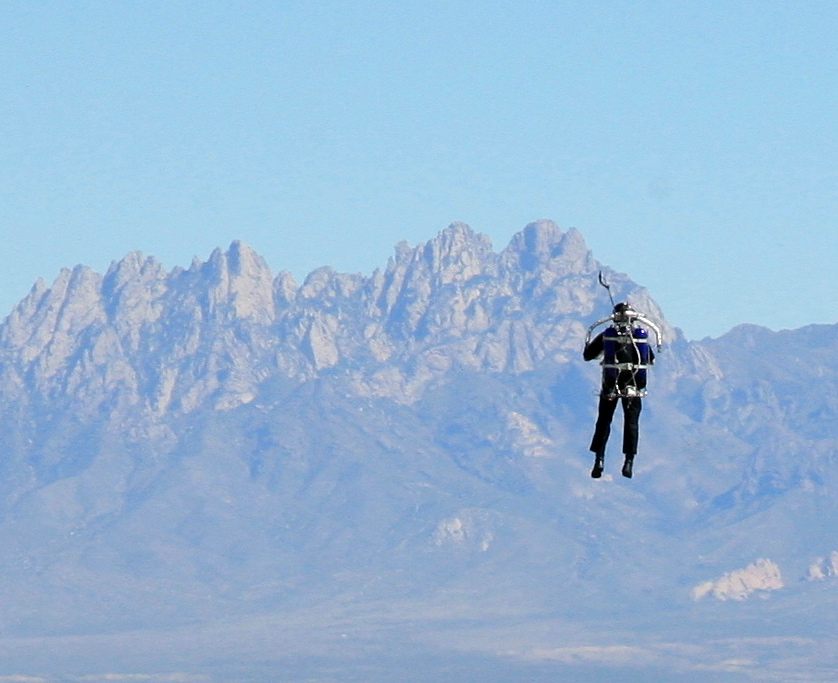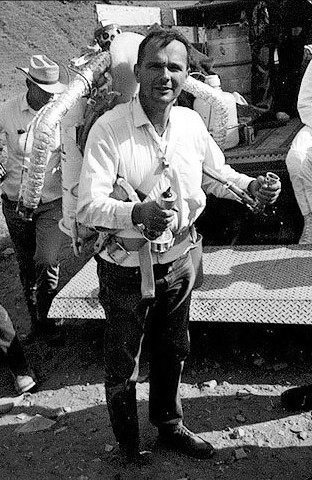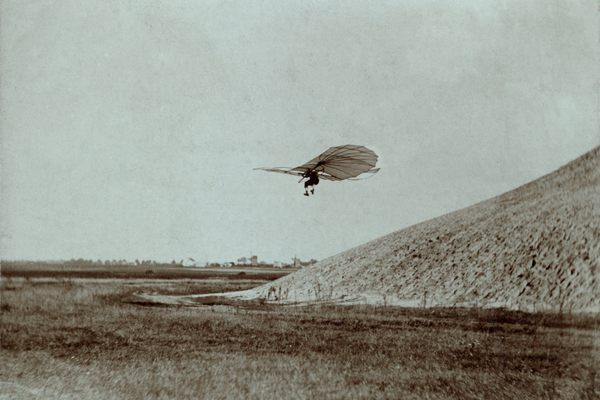Finally—Here’s Your Jet Pack!

Time to rocket into the sky for that bird’s eye view. (Photo: Steve Jurvetson/flickr)
Most of us have probably spent the past few decades wondering when someone was finally going to give us an affordable personal jet pack. Well—it’s almost here!
While not ready for mass public use quite yet, recreational jet packs are deep in development and projected to become available within the next few years, at a cost of around $150,000. If that still sounds fanciful, take note: jet packs targeted at specific groups, such as first responders who need to blast off to emergency situations, are already being ordered for delivery in 2016. A safe and stabilized jet pack for curious and otherwise aerially unqualified consumers is just around the bend. Really.


A 1928 cover of science fiction magazine Amazing Stories, featuring a jet pack that did not yet exist. (Image: WikiCommons/Public Domain)
Personal jet packs have had a long and often frustrating history that goes back to 1919, when a Russian inventor debuted a design for the device. A jet pack, generally worn on the back, is propelled by jets of escaping gases that push an individual up and off the ground. Several different people have claimed to have created the first functional jet pack, and today, the race is still on to see who can create the most functional one. Purists believe that jet packs must feature Vertical Take-Off and Landing (VTOL), but the device exists in different variations.
Jet packs, sometimes called rocket packs, appeared in works of science fiction a few decades before entering the realm of reality. In 1928, the jet pack could still only be seen in places like Amazing Stories, an American science fiction magazine. By 1965, the James Bond film Thunderball featured its hero deploying a jetpack known as the Bell Rocket Belt—and saying that “No well-dressed man should be without one.”

Astrogeologist Gene Shoemaker wearing a Bell Rocket Belt while training astronauts during the 1960s. (Photo: WikiCommons/Public Domain)
The Bell Rocket Belt was built in the early ’60s for the U.S. Army, and used hydrogen peroxide as fuel. These early versions only allowed up to 30 seconds of flight, which left enterprising jet pack fans like New Zealander Glenn Martin with a lot of room to improve. Martin, whose company Martin Jetpack now has the most functional contraption in the market today, began developing his device in 1981. His company is currently working on a pack that will allow over 30 minutes of flight at altitudes of up to 3,000 feet and speeds of 45 miles per hour. The team is also working to install a ballistic parachute system that can deploy when the jetpack is a few meters above the ground, to ensure the flyer lands safely.
More recently, there’s also been Jet Vest (whose Kickstarter campaign never managed to take off) and Skyflash, an 11-foot winged backpack that would be the smallest twin-engined plane ever built, if it works out. There’s also Jetman, a 120-pound winged contraption that only two men in the world are equipped to fly; it travels up to 125 miles per hour but requires jumping out of a plane.
Jetpack Aviation, which claims its JB-9 to be “the world’s only true jet pack,” is the current frontrunner, alongside Martin Jetpack. While the JB-9 is compact enough to fit in a suitcase, it can only handle around 10 minutes of flight. David Mayman, one of the company’s founders, says that the only thing keeping them from selling the model immediately is safety sensibilities. But Mayman says the day when anyone can strap into a jet pack, push a button, and hover above the ground is not far off. “This stuff is not massively clever any more and it’s certainly not heavy. It’s just a matter of time and money,” he told Gizmag.
Both companies have already been receiving a lot of interest from companies, governments, and cashed-up individuals around the world. Though 80 percent of Martin’s inquiries comes from the U.S., they have also received $50 million in investment from a Chinese aerospace group. The jet packs are also seen as a more effective alternative to helicopters in rescue and reconnaissance missions.
Then there are the DIY-ers tinkering with their own personal flight devices. Troy Hartman, who’s spent time as a military pilot, sky-surf X-Games champion, and aerial stuntman, has been building his own jet pack. Hartman has a background in aerial engineering, and his ultimate objective is to create a compact personal flying machine that travels high, far, and fast. “The search is for something that has wings but is not so big that it turns into an airplane, and just enough of an aircraft so it can take off from the ground,” he says. “Something in between wing suit and hang glider, with jet engines that can whip through the sky really fast.”
Right now, Hartman doesn’t see a way to make those plans happen, but that doesn’t mean he’s not experimenting with new flying devices. His projects are geared towards the masses, more fun than practical, with the hopes that anybody can go and try them out. He’s even working on a completely new form of flight, but he’s still keeping that secret.
Ever since people have looked up at the sky, they’ve had the desire to fly like a bird. It’s a desire that has led from fantastical inventions like Da Vinci’s flying machines to tragically thwarted attempts—as when Franz Reichelt plummeted to his death in 1912 when he tried to test his wearable parachute by jumping off the Eiffel Tower. But finally, personal flight is just around the corner. Whether DIY or made by a corporation, jet packs are ready for blast-off.







Follow us on Twitter to get the latest on the world's hidden wonders.
Like us on Facebook to get the latest on the world's hidden wonders.
Follow us on Twitter Like us on Facebook